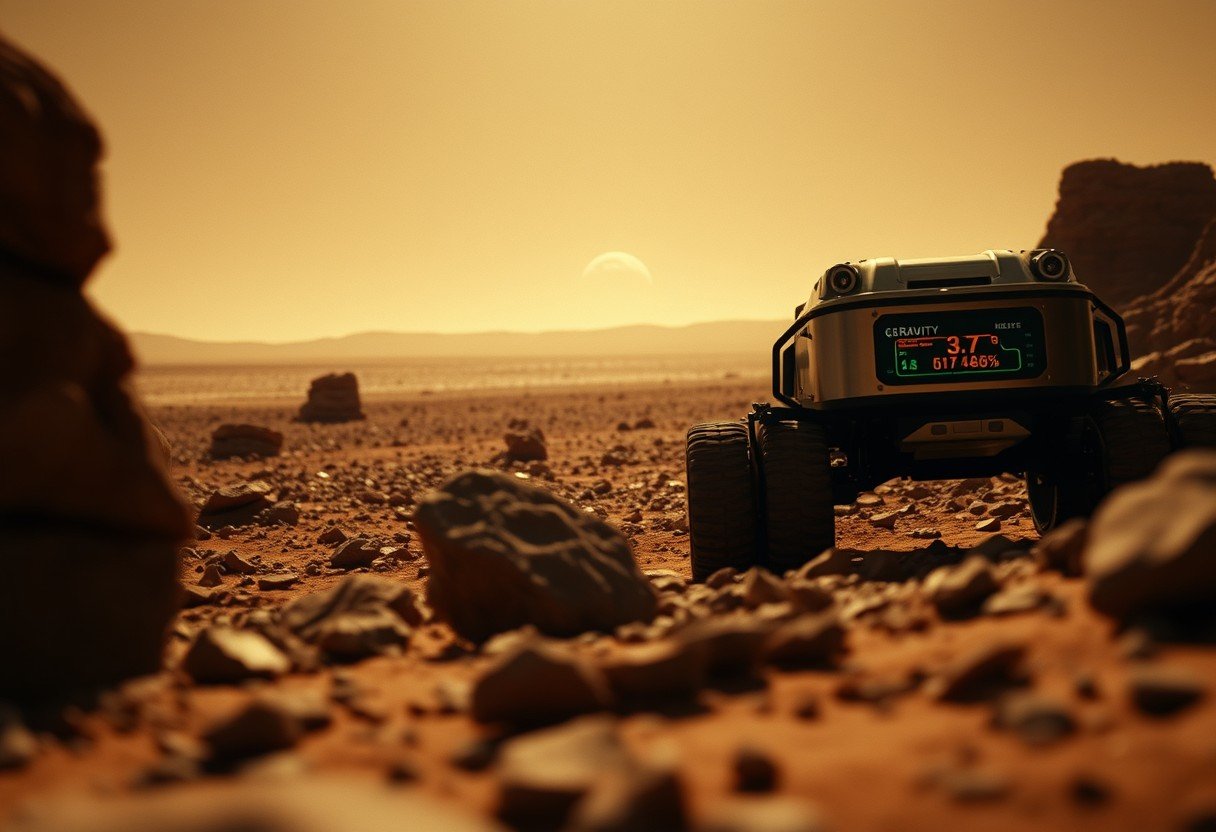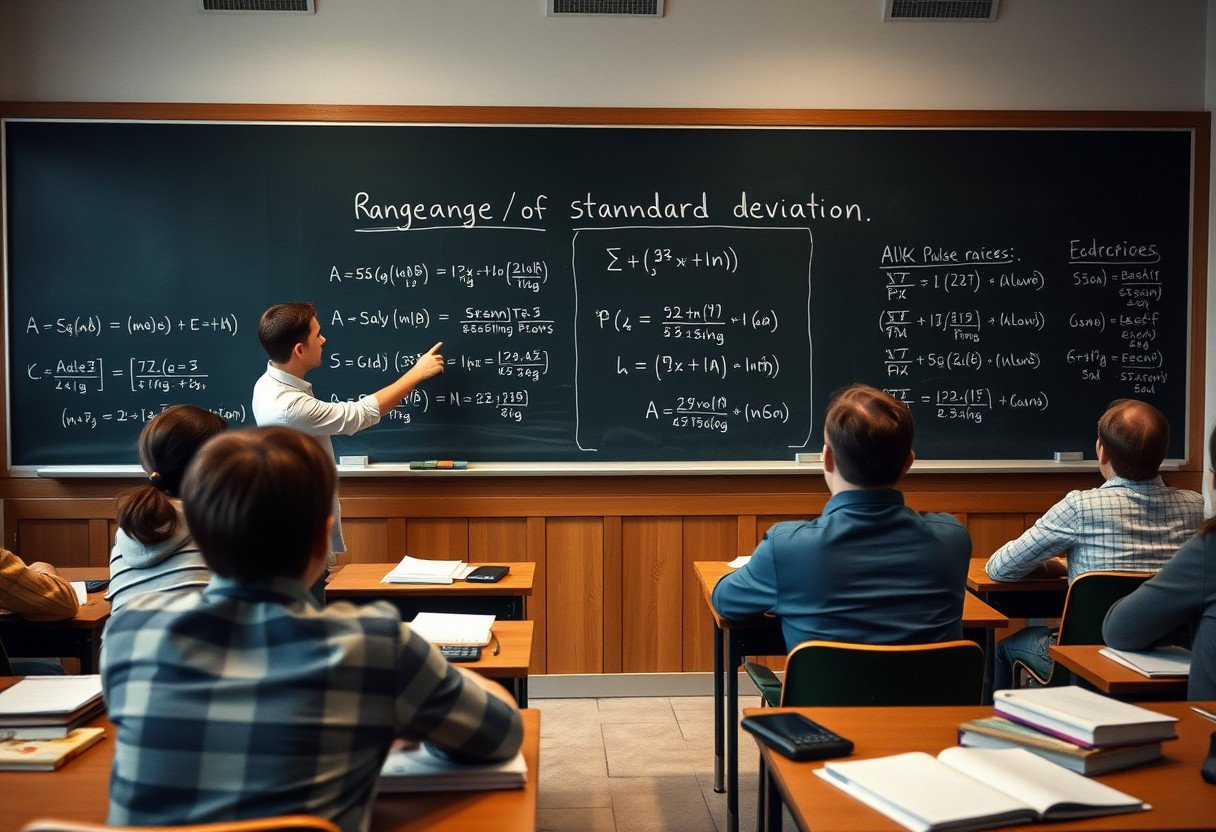Have you ever wondered how a grandfather clock would work on Mars? The swing of its pendulum, known as its period, is directly tied to gravity. On Mars, where the gravitational pull is only about 37% of Earth’s, that same pendulum would swing much more slowly. Understanding this change is key to grasping how physics operates on other planets and is crucial for designing equipment for future space missions.
Why Martian Gravity Is So Much Weaker
The first thing to understand is why you would feel lighter on Mars. It all comes down to the planet’s mass and size. Mars is smaller and less dense than Earth, resulting in a significantly weaker gravitational pull.
While Earth pulls objects towards its surface with an acceleration of about 9.81 meters per second squared (m/s²), Mars’s gravitational acceleration is only about 3.71 m/s². This means an object on Mars weighs only about 37% of what it does on Earth. This fundamental difference affects everything from how high you can jump to the time it takes for an object to fall.
This table clearly shows the difference in surface gravity between the two planets.
| Planet | Gravity (m/s²) |
|---|---|
| Earth | 9.81 |
| Mars | 3.71 |
This lower gravity is a defining characteristic of the Martian environment and has massive implications for science and exploration.
How Gravity Influences an Object’s Period
An object’s “period” is the time it takes to complete one full cycle of motion. For a pendulum, it’s one full swing back and forth. For a planet, it’s one full orbit around its star. Gravity is the driving force behind this timing.
A stronger gravitational force pulls an object back to its starting point more quickly, resulting in a shorter period. Conversely, a weaker gravitational force exerts less pull, causing the object to take longer to complete its cycle. This is why a simple pendulum on Mars behaves so differently than one on Earth.
The Simple Pendulum on the Red Planet
A pendulum is a perfect tool for demonstrating the effects of gravity. Its period doesn’t depend on the weight of the bob at the end, but only on two key factors: the length of the string and the strength of gravity.
Because the gravity on Mars is weaker, it takes longer for the pendulum’s bob to be pulled back down to the bottom of its swing. As a result, a pendulum of any given length will have a longer period on Mars than it would on Earth. This concept is not just a thought experiment; it’s a critical consideration for designing any mechanical timing devices or sensitive scientific instruments for use on Mars.
Calculating a Pendulum’s Period on Mars
You can calculate the period of a simple pendulum on Mars using a straightforward physics formula. The relationship between period, length, and gravity is universal, whether you’re on Earth, Mars, or the Moon.
The formula is: T = 2π√(L/g)
- T is the period, which is the time in seconds for one full swing.
- L is the length of the pendulum in meters.
- g is the acceleration due to gravity. On Mars, this is approximately 3.71 m/s².
To find the period, you simply plug in the length of your pendulum and the value of Martian gravity. For example, a 1-meter-long pendulum on Earth has a period of about 2 seconds. On Mars, that same 1-meter pendulum would have a period of about 3.3 seconds, making its swing noticeably slower.
What This Means for Orbital Periods
The concept of a period extends beyond simple pendulums. It also applies to objects in orbit, like satellites or the planets themselves. The time it takes for a planet to orbit the Sun (its year) is also influenced by gravity.
Mars’s year is significantly longer than Earth’s, but this is primarily due to its greater distance from the Sun, which means it has a much larger path to travel. However, if you were to place satellites in identical orbits around Earth and Mars, the satellite orbiting Mars would move more slowly and take longer to complete an orbit due to Mars’s weaker gravitational pull.
| Celestial Body | Orbital Period (Earth Days) |
|---|---|
| Earth | 365.25 |
| Mars | 687 |
This principle is fundamental to mission planning, as engineers must accurately calculate orbital periods to ensure spacecraft can successfully enter orbit around Mars and navigate the Martian system.
Real-World Implications for Mars Missions
Understanding how lower gravity affects periodic motion is not just an academic exercise. It has direct applications for the success of space exploration. Engineers must account for Martian gravity when designing everything from landing systems to rovers.
For instance, the suspension systems on Mars rovers like Curiosity and Perseverance are designed to handle the bumpy terrain in a lower-gravity environment. Furthermore, any future human habitats or scientific equipment must be built to function correctly under 0.37g. Even the health of astronauts is affected, as prolonged exposure to lower gravity can lead to bone and muscle loss.
Frequently Asked Questions about Periods on Mars
What is the period of a pendulum on Mars?
The period of a pendulum on Mars is longer than on Earth for the same length. It can be calculated using the formula T = 2π√(L/g), where ‘g’ is approximately 3.71 m/s². Because ‘g’ is smaller, the period ‘T’ will be larger.
How does the length of a pendulum affect its period on Mars?
Just like on Earth, a longer pendulum will have a longer period on Mars. The period is proportional to the square root of the length, so doubling the length won’t double the period, but it will increase it significantly.
Is the formula for a pendulum’s period different on Mars?
No, the physics formula itself remains the same everywhere in the universe. The only thing that changes is the value you use for the acceleration of gravity (g), which is specific to the planet or celestial body you are on.
Why is understanding a pendulum’s period on Mars important?
It provides crucial insights into the fundamental physics of the Martian environment. This knowledge is essential for designing and operating robotic missions, planning for human exploration, and conducting scientific experiments on the Red Planet.








Leave a Comment